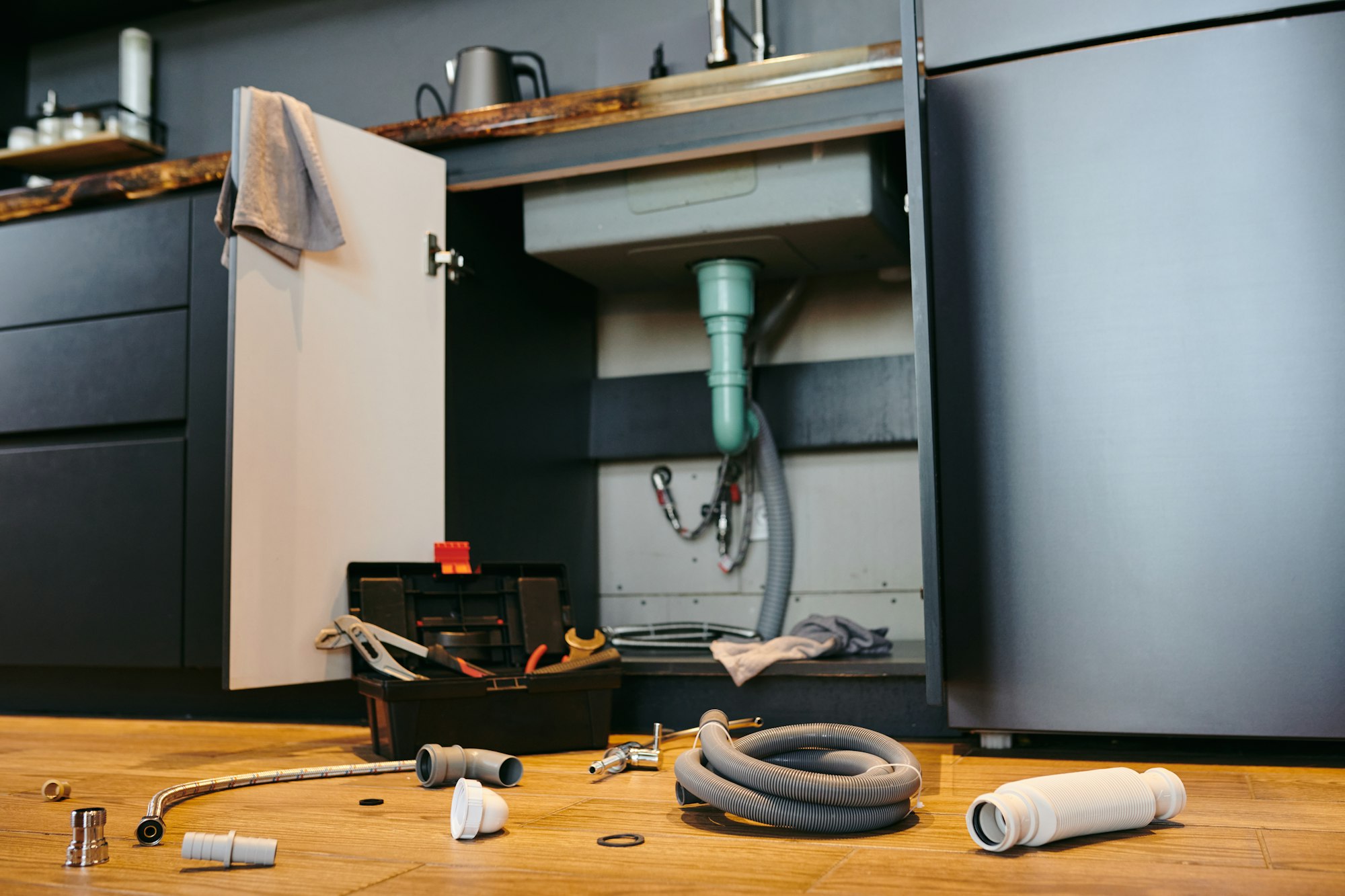The Ultimate Guide to Kitchen Sink Cabinets: Types, Installation, and Maintenance
Introduction
The sink area is a crucial component in any kitchen, and a well-designed kitchen sink cabinet can enhance both functionality and aesthetics. This guide covers kitchen sink cabinets, including types, construction, installation, and maintenance. Whether you’re looking to upgrade your current setup or plan a new kitchen, this comprehensive article will provide valuable insights.
What Is a Kitchen Sink Cabinet?
A kitchen sink cabinet is a specific type of cabinetry designed to house a kitchen sink. It provides storage space and supports the sink, plumbing fixtures, and often other kitchen essentials. This cabinet type is essential for maintaining a clean and organized kitchen.
Importance and Relevance
Understanding kitchen sink cabinets is essential for homeowners and renovators. These cabinets contribute to the kitchen’s overall look and ensure that the sink and plumbing are properly supported. Additionally, well-designed sink cabinets can offer valuable storage space and improve the kitchen’s functionality.
Types and Categories of Kitchen Sink Cabinets
Kitchen sink cabinets come in various styles and configurations to suit different needs and preferences. Here are some popular types:
Standard Sink Cabinets
These are the most common types of sink cabinets. They feature a simple design with open space below the sink for plumbing.
Corner Sink Cabinets
These cabinets are made to fit into a corner and make the best use of space, making them perfect for small kitchens or kitchens with odd plans.
Deep Sink Cabinets
These cabinets accommodate deeper sinks and are perfect for those needing extra space to wash larger items.
Double Sink Cabinets
Designed for homes with double sinks, these cabinets offer increased functionality and convenience for multitasking.
Custom Sink Cabinets
For a more personal touch, sink cabinets can be made to order to fit your wants and tastes, with different sizes and extra features.
How to Build a Kitchen Sink Cabinet
Building a kitchen sink cabinet involves several steps. Here’s a basic overview:
Materials Needed
- Plywood or MDF for the cabinet structure
- Wood screws and brackets
- Cabinet hinges and handles
- Sink and plumbing fixtures
- Paint or stain
Tools Required
- Measuring tape
- Saw (circular or table)
- Drill and bits
- Screwdriver
- Sandpaper
Step-by-Step Instructions
- Measure and Plan: Measure the dimensions of your sink and the space where the cabinet will be installed. Plan the cabinet size accordingly.
- Cut the Wood: Cut the plywood or MDF according to your measurements. Ensure you have top, sides, back, and shelf pieces.
- Assemble the Cabinet: Using wood screws and brackets, assemble the cabinet structure. Ensure it’s square and sturdy.
- Install the Sink: Cut a hole in the cabinet top for the sink. Install the sink and secure it according to the manufacturer’s instructions.
- Finish the Cabinet: Sand and paint or stain the cabinet as desired. Allow it to dry completely before installation.
- Install Plumbing: Connect the plumbing fixtures and ensure everything is leak-free.
- Attach the Cabinet: Secure the cabinet to the wall and ensure it is level.
Kitchen Sink Cabinet Designs and Styles
The design of a kitchen sink cabinet can significantly impact the kitchen’s overall look. Here are some popular styles:
Traditional
Traditional sink cabinets feature classic designs with detailed moldings and often use wood materials for a timeless look.
Modern
Modern sink cabinets are made of metal, glass, and other simple materials and have clean designs.
Farmhouse
Farmhouse-style sink cabinets offer a rustic charm with their simple, robust design and often include apron-front sinks.
Shaker
Shaker-style cabinets are known for their clean lines and functional design, making them versatile for various kitchen styles.
Transitional
Transitional sink cabinets blend traditional and modern elements, creating a balanced and adaptable design.
Installation and Maintenance of Kitchen Sink Cabinets
Installing and taking care of your kitchen sink cabinet correctly ensures it stays useful and appealing.
Installation Tips
- Ensure Leveling: Use a level to ensure the cabinet is perfectly aligned.
- Secure Properly: Attach the cabinet securely to the wall to prevent shifting.
- Check Plumbing: Ensure that all plumbing connections are properly installed and leak-free.
Maintenance Tips
- Regular Cleaning: Clean the cabinet regularly to prevent grime buildup.
- Check for Leaks: Regularly inspect the plumbing for leaks or damage.
- Refinish as Needed: Repaint or refinish the cabinet periodically to maintain its appearance.
Common Problems and Solutions
Leaking Plumbing
Solution: Regularly inspect and tighten plumbing connections. Replace any worn or damaged seals.
Water Damage
Solution: Use waterproof finishes and sealants to protect the cabinet from water damage. Ensure any spills are cleaned promptly.
Scratches and Dents
Solution: Sand and refinish the affected areas to restore the cabinet’s appearance.
Kitchen Sink Cabinet Trends in 2024
Sustainable Materials
More and more kitchen cabinets are being made from eco-friendly materials, such as recycled materials and wood from safe sources.
Integrated Lighting
Modern sink cabinets incorporate built-in lighting to enhance visibility and create ambiance.
Smart Features
Technology integration, such as touchless faucets and built-in charging stations, is becoming more common in kitchen sink cabinets.
Minimalist Designs
Sleek, minimalistic designs with clean lines and hidden hardware are popular for their modern appeal.
Frequently Asked Questions (FAQs)
What is the difference between a kitchen sink cabinet and a regular cabinet?
A kitchen sink cabinet is specifically designed to accommodate a sink and its plumbing, whereas regular cabinets are used for general storage and may not include provisions for plumbing.
How do I choose the right size for my kitchen sink cabinet?
Measure the dimensions of your sink and the available space in your kitchen. Consider the type of sink and plumbing requirements to determine the appropriate cabinet size.
Can I install a kitchen sink cabinet myself?
Yes, if you have basic carpentry skills and tools, you can install a kitchen sink cabinet yourself. However, if you’re unsure, hiring a professional to ensure proper installation is best.
How can I prevent water damage to my kitchen sink cabinet?
To prevent water from damaging your kitchen sink cabinet, use waterproof finishes, clean up spills immediately, and check for leaks often.
What materials are best for kitchen sink cabinets?
Durable materials such as plywood, MDF, and solid wood are commonly used. For added protection, consider cabinets with waterproof finishes.
Conclusion
Choosing the right kitchen sink cabinet and placing it correctly can make your kitchen look better and work better. If you know about the different types, how they are built, and how to keep them in good shape, you can make choices that will last for years. Choosing the right kitchen sink cabinet will pay off in a beautiful and functional kitchen, whether you go with a standard design or have one built just for you.
Ready to make your kitchen look different with a handmade sink cabinet? Get free quotes and expert advice at contractorhomequotes.com today!
Charlottesville Siding Specialists: Premium Repairs and Custom Installations
Discover how Charlottesville Siding Specialists: Premium Repairs and Custom Installations Near You can transform your home with expert siding repair and personalized installation services, ensuring lasting quality and aesthetic appeal.
Lynchburg Siding Contractors: Your Trusted Partner to Revamp Your Home
Lynchburg Siding Contractors: Revamp Your Home with Trusted Professionals offers reliable expertise in siding materials and installation, ensuring your home achieves both beauty and longevity. Discover how their quality craftsmanship can transform your home.
Hampton Siding Services: Your Local Solution for Durable and Affordable Repairs
Hampton Siding Services: Your Local Solution for Durable and Affordable Repairs offers unparalleled expertise and competitive pricing for all your siding needs. Discover the benefits of choosing our local service, including quality materials and a commitment to customer satisfaction.
Find a Pro!
"*" indicates required fields







